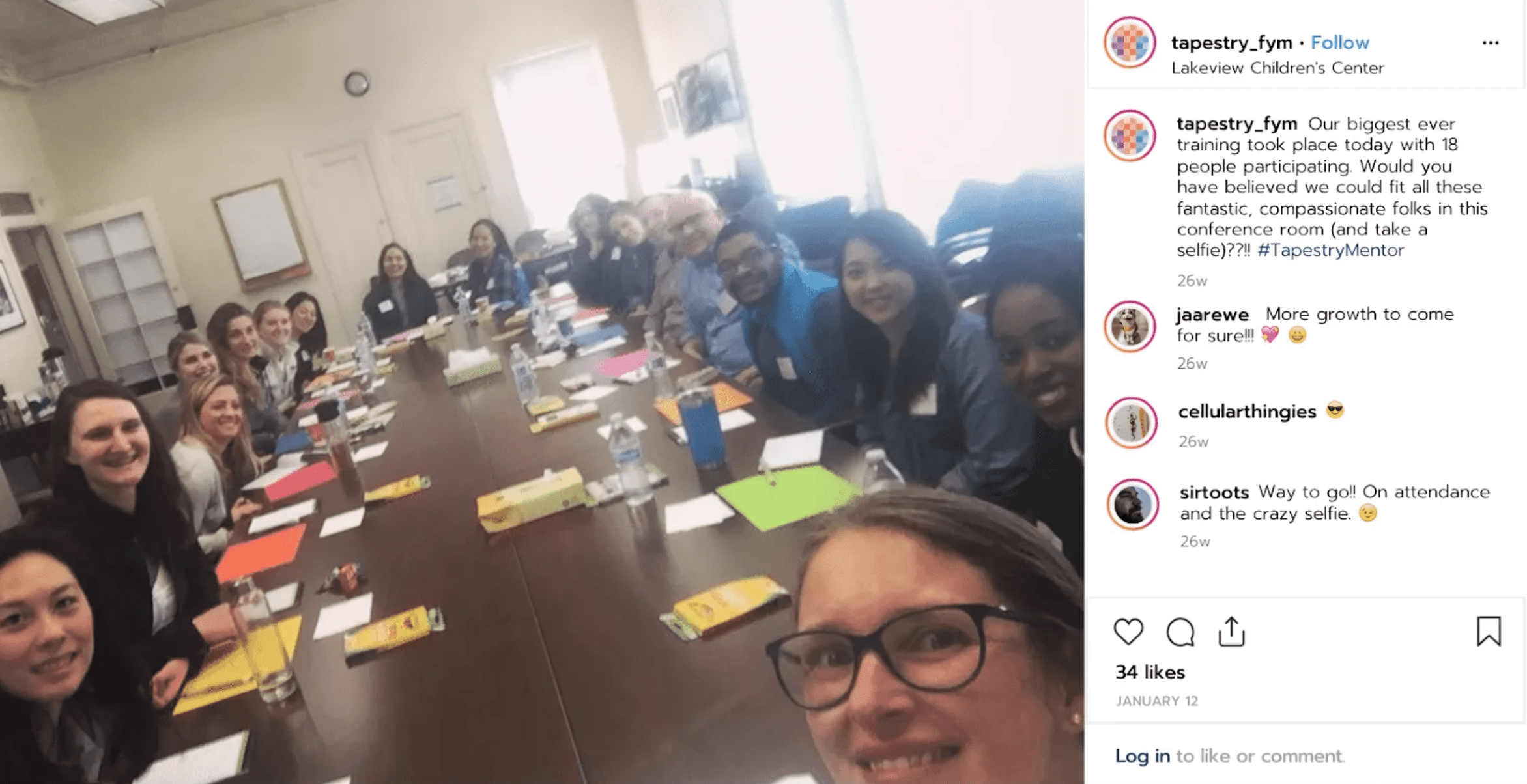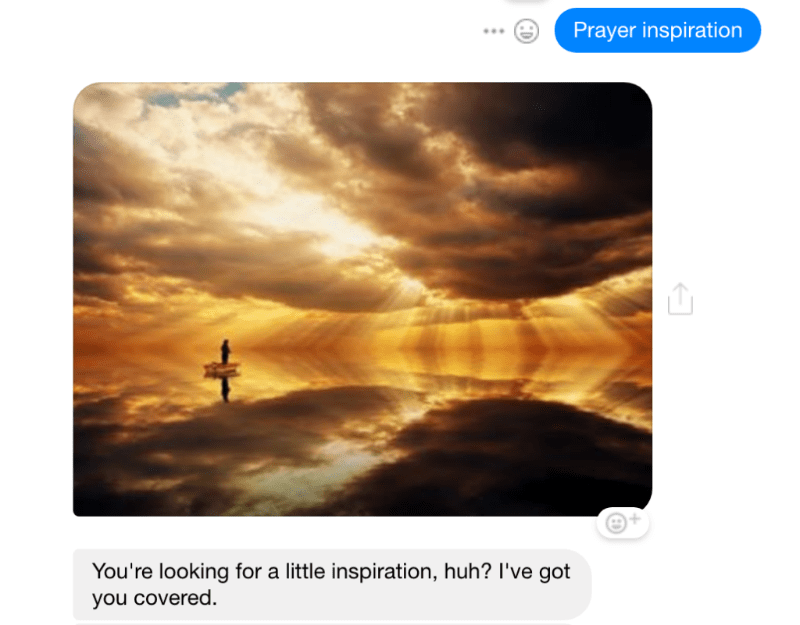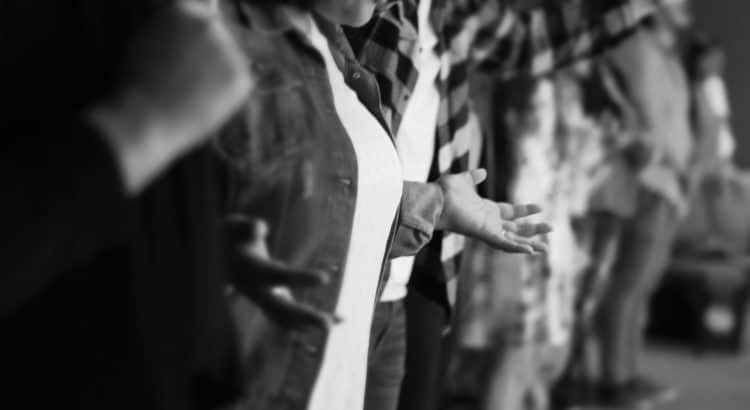A sermon for the Fourteenth Sunday after Pentecost:
1 Kings 8:22-30, 41-43; Psalm 84; Ephesians 6:10-20; John 6:56-69
**
This week I repeatedly re-lived a memory from, I think, my junior year of college.
I was walking down Regent St. in Madison, WI. I was talking to my mother on my brand new cell phone: my first, in fact.
My mother was concerned. It was below zero outside, with nasty wind, and I was on my way to go jump in a lake.
It was January 1st, and our intrepid campus ministry group had signed up to do the Polar Plunge. That’s crazy Wisconsinites and crazier out-of-staters jumping through a hole in the ice on New Year’s Day.
Now before you get too worried on my behalf, know that the morning ended sooner and more warmly than we expected. It was *so* cold that organizers were having trouble keeping the hole in the ice clear of refreezing slush. They had to cancel.
But as I was saying, the memory is from before I knew all this. I had dialed my mom in Milwaukee, nonchalantly I was sure, to engage in that act of understated showboating that we now have a word for: the humble brag.
“Hey, Mom. Ooph, yeah, it’s freezing. Yeah, I bet you’ve got a fire going in the den at 9 am, it’s nasty out. What am I up to? Why is it so windy? Well, I’m on my way to St. Francis House to meet the gang and then go do the Polar Plunge.”
You know, I’m gonna go willingly subject my body to brief but serious trauma. No big deal.
Now, stoicism is a major Midwestern value, so my mom took the news in stride. But worrying is a major Oliver family pastime, so I still had to stand for interrogation.
Above all, I had to assure her that I was wearing enough warm clothing.
And I was: Moisture wicking socks under the heavy wool ones, serious winter boots with thick liners of their own, long underwear, flannel-lined blue jeans, who knows how many layers of thermal shirts and sweaters, a parka with hood, gloves fit for a day of ice fishing, a scarf covering my face and lower neck, and yes, I kid you not, ski goggles.
I’m honestly not sure how I could get the phone to my ear.
**
Getting dressed on a day like that is preparing to contend with the elements. There’s a ritual to getting bundled up, really bundled up, a sequence of moves attentive to the body but also evoking a certain mindset.
I want to propose to you that dressing responsibly for a long, cold day out is an apt replacement metaphor for what I think the author of Ephesians is getting at in this famous passage about putting on “the whole armor of God.”
It’s a faithful stand-in because, while the language of Ephesians 6 sounds militaristic, notice that the objective in this passage isn’t victory or conquest.
No, the Christian soldier’s gear is almost entirely defensive: breastplates, shields, etc. The goal, it seems, merely to survive the skirmish.
Even when we hear about a sword, it’s mentioned along with a helmet, and it’s a sword “of the Spirit,” which in my mind tempers thoughts of honed edges and sharp steel. Together this helmet-sword pairing is described as “the word of God,” so the war we’re riding off to will apparently be won by proclamation and faithful action.
Actually, I want to move us away from thoughts of even metaphorical warfare per se. The operative word in this translation is “struggle.” The King James has “wrestle,” which in this case is probably the better choice. Remember Jacob wrestling with God.
If you don’t believe me, look at what all this armor is supposed to help us do:
- “stand”
- “withstand”
- “stand firm”
- “keep alert”
- “persevere”
And here’s my favorite detail, translated in an urgent, pragmatic voice that returns us to an earlier theme from Ephesians:
“As shoes for your feet put on whatever will make you ready to proclaim the gospel of peace.”
**
The armor of God is much more like warm clothing against the harsh winter than a brimming complement of weapons with which to subdue our foes. In fact, we don’t really even have foes, not exactly:
“For our struggle is not against enemies of blood and flesh, but against the rulers, against the authorities, against the cosmic powers of this present darkness, against the spiritual forces of evil in the heavenly places.”
If that sounds a little subtle, a little systemic, a little abstract, well, that just goes to show why the struggle is long and hard, why we need perseverance as if for an interminable day out in the cold, why nothing less than the word of God will keep us focused and effective in our work.
I fear that too many Christians have misidentified this passage’s “powers and principalities,” assuming they are ominous Others set on conquering us rather than systems of already operating oppression constructed subtly and collectively by communities, governments, networks of influence, and yes religious institutions. These powers are set on further disempowering and exploiting the most vulnerable.
So let’s take the militarism out of our reading of this passage. The Christian response to coercive force is not to dish it back in turn.
This is not to say that righteousness must not prevail, that the struggle against oppression must not include the “winning out” of certain ideas and values.
Neither does this reading rule out accountability for wrongdoing, and the tearing down of unjust structures in order to make room for new ones that will better support the flourishing of the whole human family.
But to note that the armor of God is for persevering against systems of evil rather than “defeating evil people” does mean naming sin without vilifying others and without giving ourselves a pass for how we might be complicit in those systems.
It does mean holding fast to hope and mutual affection in the midst of so many reasons to despair. Make no mistake, the “powers and principalities” are real.
We hear of them in scathing church abuse reports, resurging environmental degradation, the scapegoating of immigrants and poor people, and the continued separation of more than 500 children from their parents due to what seems for all the world like deliberate and malignant government incompetence.
Being bolstered by the armor of God means continuing to believe that things can get better for people who are ready ready for better. It means believing we all have a part to play, with God’s help.
It may feel right now that compassion and fair-mindedness and even the aspiration to moral authority have been left standing out in the cold. But I believe people of good faith all over the world can and will continue to stand, continue to lace up and step out, continue to make a difference for the marginalized and forgotten.
So pray for whatever armor will help you persevere. The way won’t be easy, but our God is strong to save. And we are stronger than we know.
Image credit: “Ola de frío polar” by chicageek via Flickr (CC BY NC ND 2.0)












